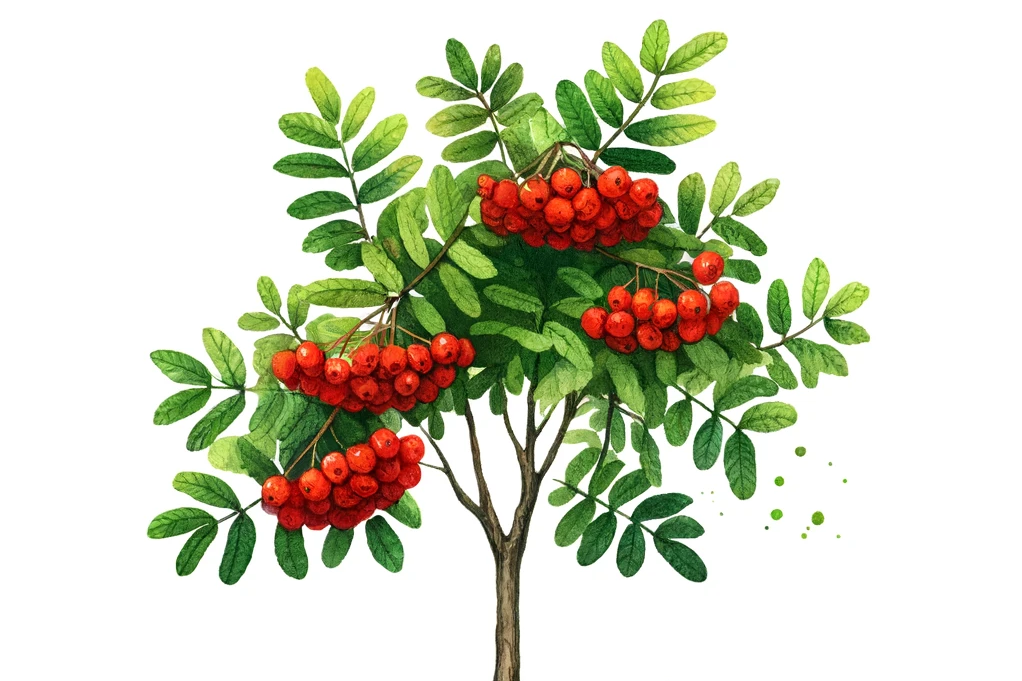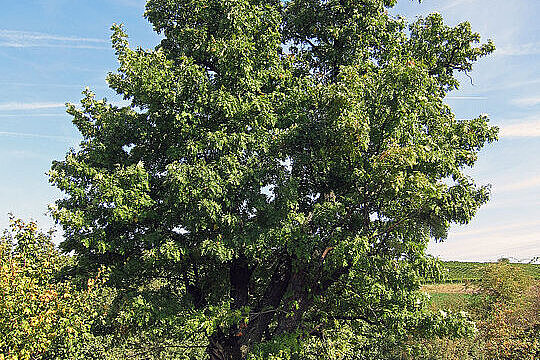Wild service tree

What is wild service tree?
The wild service tree (Sorbus torminalis) belongs to the rose family and is related to the apple. The name is derived from the Old High German word "els" for alder. In fact, the service tree has similar leaves to the alder, but smaller and rounder fruits. These are greenish-yellow to reddish-brown and have a diameter of around 1 to 2 centimetres. They ripen in the fall and then fall from the tree.
The wild service tree is a very demanding plant that only thrives in nutrient-rich, calcareous soil. It also needs a lot of light and does not tolerate shade. This is why it has become very rare in Germany and is a protected species. It grows mainly in deciduous forests and on forest edges.
The wild service tree has a high content of vitamin C, potassium, calcium, iron and pectin. In folk medicine, it is used to treat diarrhea, stomach complaints and sore throats. It is also said to strengthen the immune system and have an anti-inflammatory effect.
What are the benefits of wild serviceberries for dogs?
Wild serviceberries can also be healthy for dogs if they are fed in moderation. The fruits contain fiber, which can aid digestion and regulate bowel movements. They can also help to remove toxins from the body and lower cholesterol levels.
Wild serviceberries are also rich in antioxidants, which can protect cells from free radicals. Free radicals are harmful molecules that are produced by environmental factors or metabolic processes and can lead to ageing, inflammation and disease. Antioxidants can therefore strengthen the immune system and reduce the risk of cancer, cardiovascular disease and other chronic illnesses.
Wild serviceberry can also stabilize blood sugar levels and curb appetite. This can be particularly beneficial for overweight or diabetic dogs.
What are the disadvantages of wild service tree for dogs?
Wild service tree is not suitable for all dogs. The fruit also contains tannins, which can cause stomach irritation or diarrhea in sensitive dogs. Tannins are plant substances that have an astringent effect, i.e. they constrict the mucous membranes. This can lead to discomfort or cramps in some dogs.
You should also make sure that the wild service tree is ripe before giving it to your dog. Unripe fruit is very hard and can lead to choking or intestinal obstruction if swallowed. They are also very acidic and can attack tooth enamel.
How can I offer my dog wild serviceberries?
If you want to give your dog wild serviceberries, you should bear a few points in mind:
- Only collect ripe fruit from the ground or from the tree. Avoid unripe or rotten fruit.
- Wash the fruit thoroughly to remove any dirt or pesticides.
- Remove the seeds from the fruit. The seeds contain hydrocyanic acid, which can be toxic to dogs.
- Cut the fruit into small pieces or mash it into a pulp.
- Only give your dog small amounts of wild serviceberries as a treat or as an addition to their food. Start with one teaspoon a day and observe how your dog reacts to it.
- Don't overdo it with the wild service tree. Too much can lead to digestive problems or nutrient imbalances.
The wild service tree is a rare and healthy fruit for dogs that can be given as a treat from time to time. It has a high nutritional value and a pleasant taste. However, you should make sure that the fruit is ripe and only feed small amounts.
Properties 1
Are you looking for other ingredients with a specific property?
Just click on them to find more.
If you notice any signs of hypersensitivity or poisoning in your dog, you should see your vet immediately. We are not a substitute for a vet, but we try to be as accurate as possible. Every dog reacts differently and we recommend you get a second opinion or consult your vet if in doubt.
Stay healthy and take good care of your four-legged friend!😊
Similar to Wild service tree
The rowan tree (Sorbus aucuparia) belongs to the rose family and to the genus of rowanberries. It is widespread throughout Europe and large parts of Asia and is very adaptable to different locations...
Speierling (Sorbus domestica) is a deciduous tree from the rose family that is native to Central Europe. It is also known as medlar tree, service tree or Speyerling and can grow up to 30 meters high...
Cornelian cherry is a plant species from the dogwood family. It grows as a shrub or small tree and has white flowers in spring, which later turn into red or yellow berries. The berries are edible...
Rosehips are the seed capsules of wild roses that ripen after flowering in the fall. They contain many small, hard seeds surrounded by soft, juicy flesh. Rosehips are rich in vitamin C, which...



